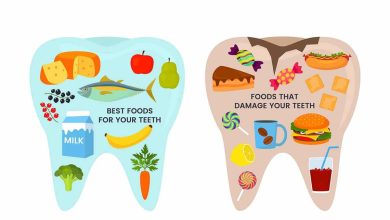Why Workplace First Aid and CPR Training is Important?

ssssThi .First Aid refers to the initial care and treatment given to a person who has been injured or is suddenly taken ill. First Aid aims to preserve life, prevent further harm, and promote recovery. Anyone can perform First Aid, regardless of their medical training, and is often the first step in providing medical care in an emergency.
Cardiopulmonary resuscitation (CPR) is a lifesaving technique used to revive a person whose heart has stopped beating or who has stopped breathing. CPR combines chest compressions with artificial ventilation (breathing into the person’s mouth) to circulate blood and oxygen to the brain and other vital organs.
In many countries, CPR is considered a basic component of first aid training. CPR aims to maintain circulation and breathing until more advanced medical care can be provided. CPR can be performed by laypeople, but it is recommended that people receive training to become proficient in the technique.
In conclusion, first Aid and CPR are critical skills that can help save lives and prevent serious injuries in an emergency. By providing first aid and CPR training, individuals can be equipped to respond quickly and effectively in an emergency, potentially making the difference between life and death.
Accidents in American Workplaces Every Year
It is difficult to provide an exact annual amount of accidents in the workplace as the frequency and severity of accidents can vary greatly depending on factors such as the industry, the size of the workplace, and the country in which the workplace is located.
However, workplace accidents and injuries are a serious concern and are estimated to occur significantly globally. According to the International Labour Organization (ILO), an estimated 2.78 million workers die yearly from work-related accidents or diseases. There are an additional 374 million non-fatal workplace accidents.
In the United States, the Bureau of Labor Statistics (BLS) reports approximately 2.8 million non-fatal workplace injuries and illnesses reported by private industry employers in 2020.
These statistics demonstrate the importance of preventing workplace accidents and injuries by providing safety training, implementing safety measures, and conducting regular safety inspections. Employers can help protect their employees and ensure a safe and healthy work environment by prioritising workplace safety.
Importance of Workplace First AID and CPR Training
Workplace first aid and CPR training are important for several reasons:
- Employee Safety: Providing First Aid and CPR training to employees ensures they are prepared to respond in an emergency, which can save lives and prevent injuries from becoming more serious.
- Legal Compliance: Many countries have laws that require employers to provide basic first aid training to their employees. In some industries, more extensive training may be required by law.
- Risk Management: Providing First Aid and CPR training to employees can help reduce liability risk in an emergency. Suppose an employee is trained and equipped to provide first Aid. In that case, they may be able to take prompt and effective action, reducing the risk of serious injury or death.
- Workplace Morale: Employees who feel their employer values their safety and well-being are likelier to be engaged at work. Providing first aid and CPR training can help improve workplace morale and foster a positive work environment.
- Preparedness: In an emergency, having employees trained in First Aid and CPR can help ensure that the workplace is prepared to respond quickly and effectively. , reducing the potential for serious injury or death.
In conclusion, workplace first aid and CPR training is a critical component of a comprehensive safety program that helps ensure the well-being of employees, meets legal requirements and helps reduce the risk of liability.
CPR and First Aid Training for managers
Emergency Response: Managers play a critical role in ensuring the safety of their employees and having CPR, and first aid training allows them to respond quickly and effectively in the event of an emergency.
Legal Compliance: In many countries, employers must provide first aid training to their employees, including managers. Having trained managers on staff can help ensure compliance with these regulations.
Employee Morale: When employees see that their manager has taken the time to receive CPR and first aid training, they will likely feel that their safety and well-being are valued, which can help improve morale and foster a positive work environment.
Risk Management: Providing managers with CPR and first aid training can help reduce liability risk in an emergency. Suppose a manager is trained and equipped to provide first Aid. In that case, they may be able to take prompt and effective action, reducing the risk of serious injury or death.
Preparation for the Unexpected: Accidents and emergencies can happen at any time. Managers trained in CPR and First Aid can help ensure the workplace is prepared to respond quickly and effectively., reducing the potential for serious injury or death.
In conclusion, CPR and first aid training for managers is a critical component of a comprehensive safety program that helps ensure the well-being of employees, meets legal requirements and helps reduce the risk of liability. By providing this training to managers, employers can help create a safe and healthy work environment for their employees.
How to avoid workplace accidents?
Several steps can be taken to reduce the risk of workplace accidents, including heart attacks and cardiac arrest:
Encourage a healthy lifestyle: Encouraging employees to adopt healthy habits, such as regular exercise, a balanced diet, and stress management, can help reduce the risk of heart attacks and other health problems.
Promote physical activity: Providing opportunities for employees to be physically active during the workday, such as stretching breaks or on-site gym facilities, can help reduce the risk of heart attacks and cardiac arrest.
Provide CPR and First Aid training: Employers can ensure their staff is prepared to respond quickly and effectively in a cardiac emergency by providing CPR and first aid training.
Offer on-site health screenings: Regular on-site health screenings can help identify employees who may be at increased risk for heart attacks and other health problems, allowing them to take steps to address these issues.
Implement ergonomic workstations: Proper ergonomics, including adjustable desks and chairs, can help reduce the risk of workplace accidents> and health problems, including heart attacks and cardiac arrest.
Encourage breaks: Encouraging employees to take regular intervals, stretch, and move around can help reduce the risk of heart attacks and cardiac arrest by reducing stress and promoting physical activity.
Offer resources for stress management: Providing resources, such as counselling services, stress management classes, or an employee assistance program, can help employees manage stress and reduce the risk of heart attacks and cardiac arrest.
By implementing these steps, employers can help reduce the risk of workplace accidents, including heart attacks and cardiac arrest, and create a safe and healthy work environment for their employees.





